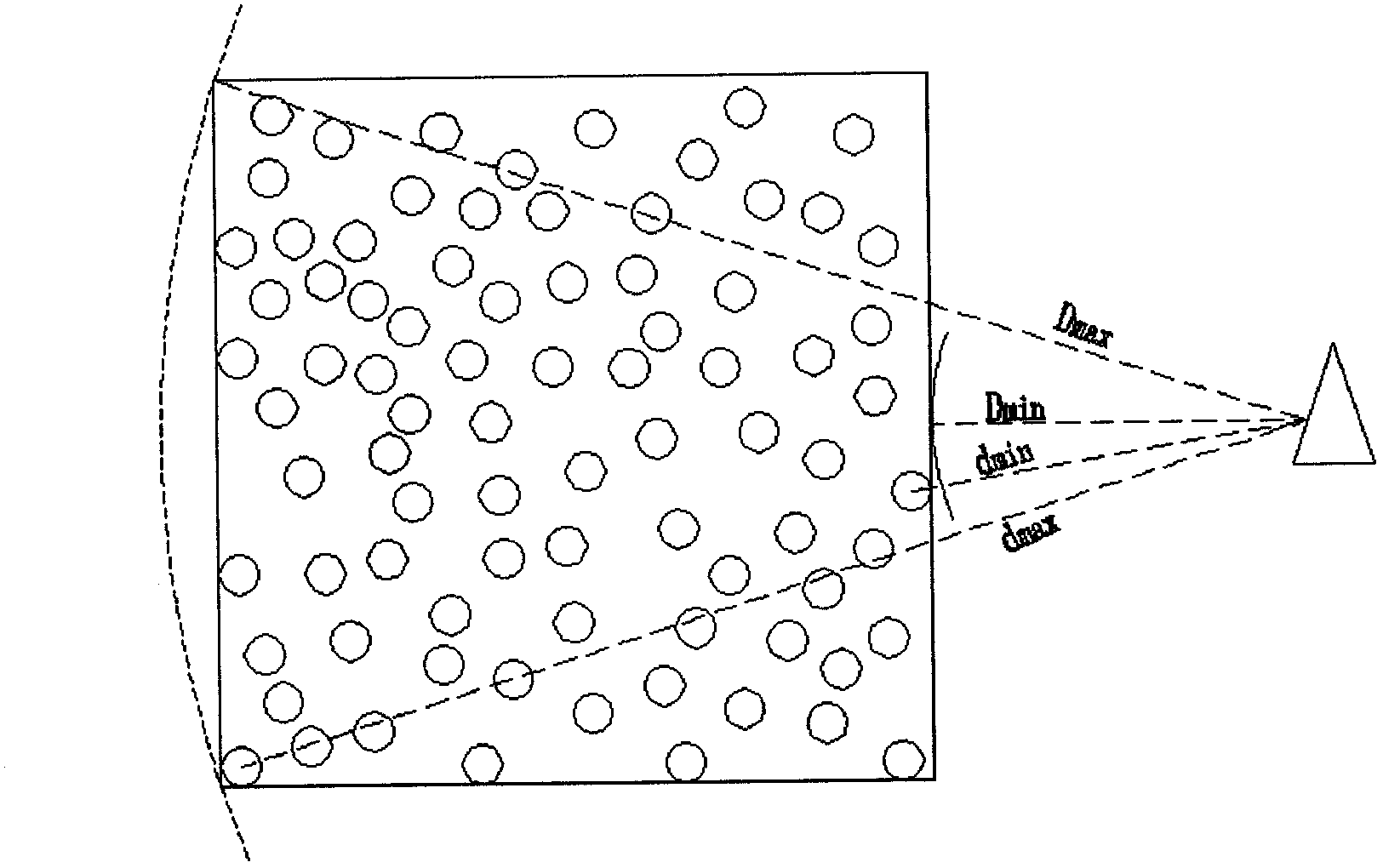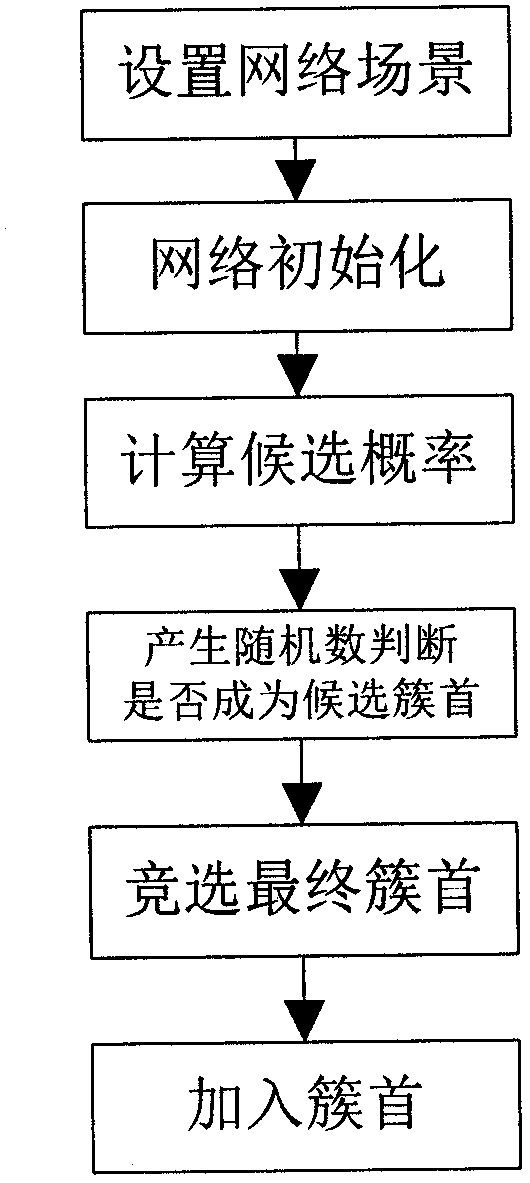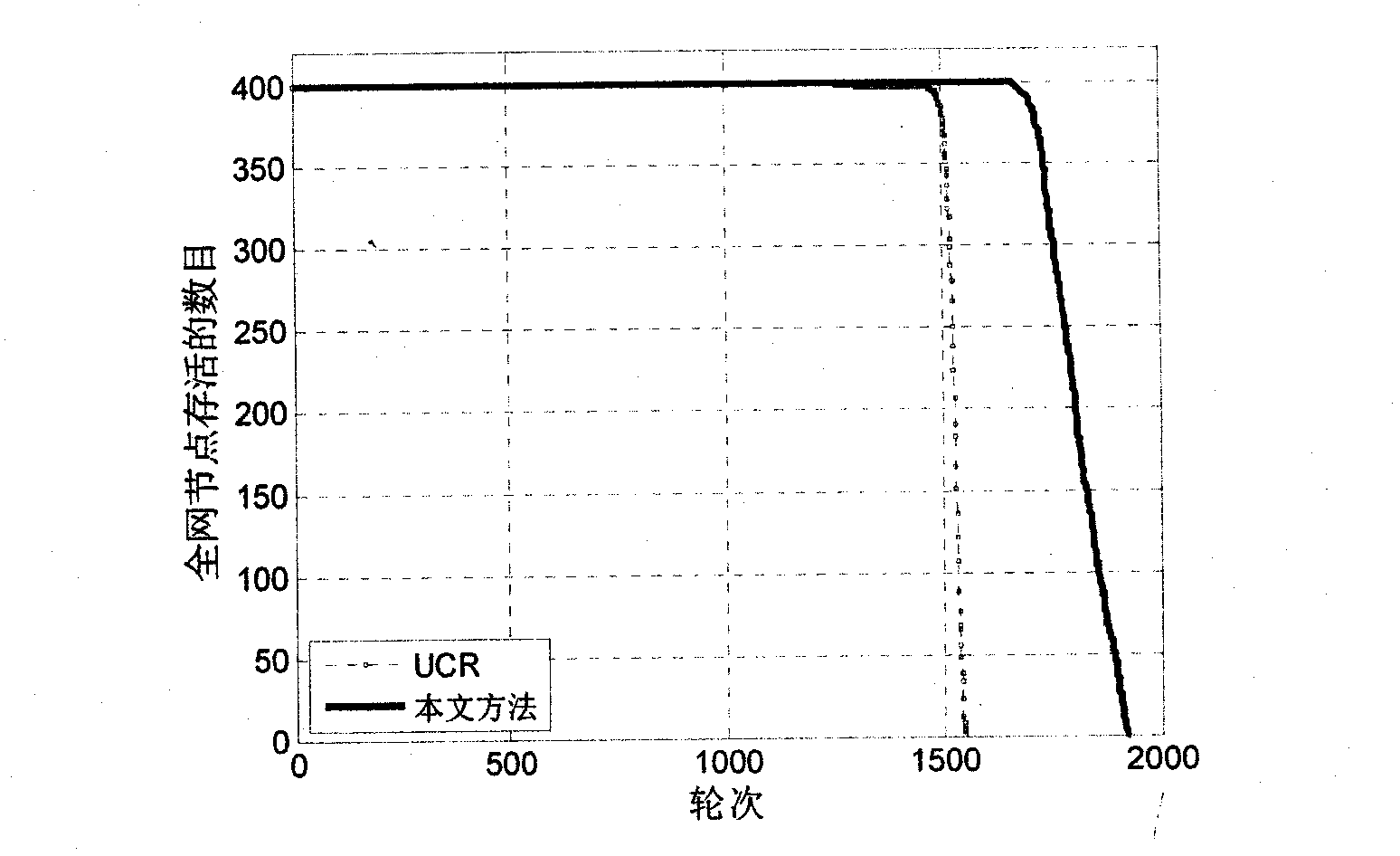WSN (Wireless Sensor Network) distributed-type non-uniform clustering method
A non-uniform clustering and distributed technology, applied in advanced technology, climate sustainability, sustainable communication technology, etc., can solve problems such as inability to guarantee full network coverage, unfavorable balanced cluster energy consumption, etc.
- Summary
- Abstract
- Description
- Claims
- Application Information
AI Technical Summary
Problems solved by technology
Method used
Image
Examples
Embodiment Construction
[0037] The present invention will be described in further detail below in conjunction with the accompanying drawings and specific embodiments.
[0038] Such as figure 1 , figure 2 As shown, a WSN distributed non-uniform clustering method, including:
[0039] Step 1: Set up the network scene;
[0040] N sensor nodes are randomly distributed in the preset monitoring area, and a gateway node is arranged outside the monitoring area. Each sensor node has a unique identification number. The monitoring area in this embodiment is (0, 0)~( In a square area of 200, 200) m, the total number of sensor nodes is N=400.
[0041] Step 2: Network initialization;
[0042] Each node establishes a "neighbor node list" by broadcasting an "initialization message", and the "neighbor node list" includes the identity number of the neighbor node and the distance between the neighbor node and the gateway node. In the implementation process, first let the gateway node broadcast a signal to the ne...
PUM
 Login to View More
Login to View More Abstract
Description
Claims
Application Information
 Login to View More
Login to View More - R&D
- Intellectual Property
- Life Sciences
- Materials
- Tech Scout
- Unparalleled Data Quality
- Higher Quality Content
- 60% Fewer Hallucinations
Browse by: Latest US Patents, China's latest patents, Technical Efficacy Thesaurus, Application Domain, Technology Topic, Popular Technical Reports.
© 2025 PatSnap. All rights reserved.Legal|Privacy policy|Modern Slavery Act Transparency Statement|Sitemap|About US| Contact US: help@patsnap.com



